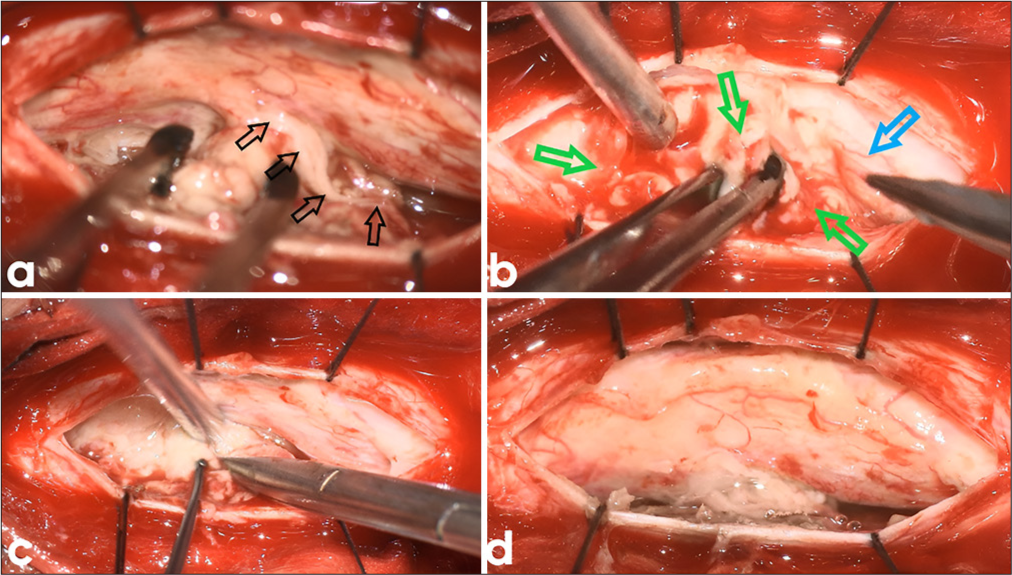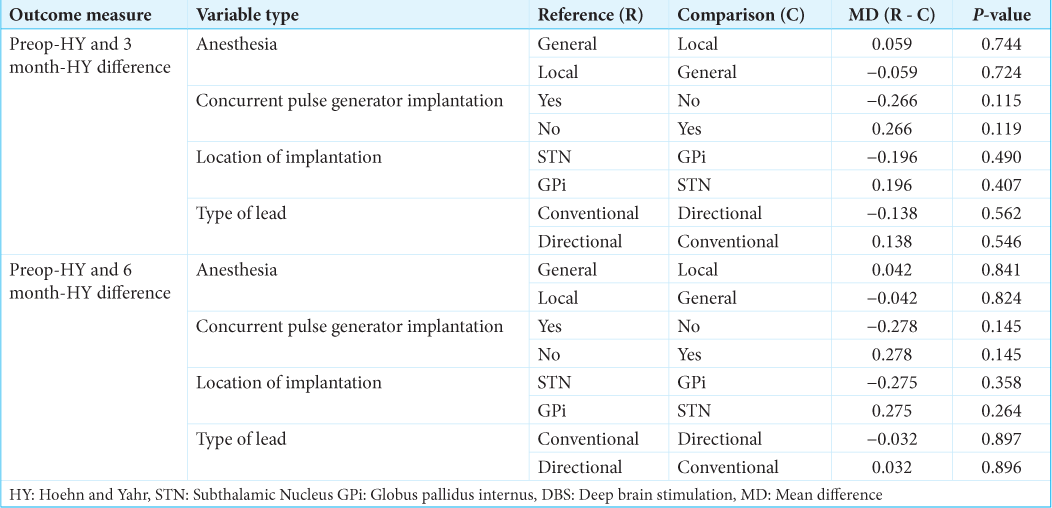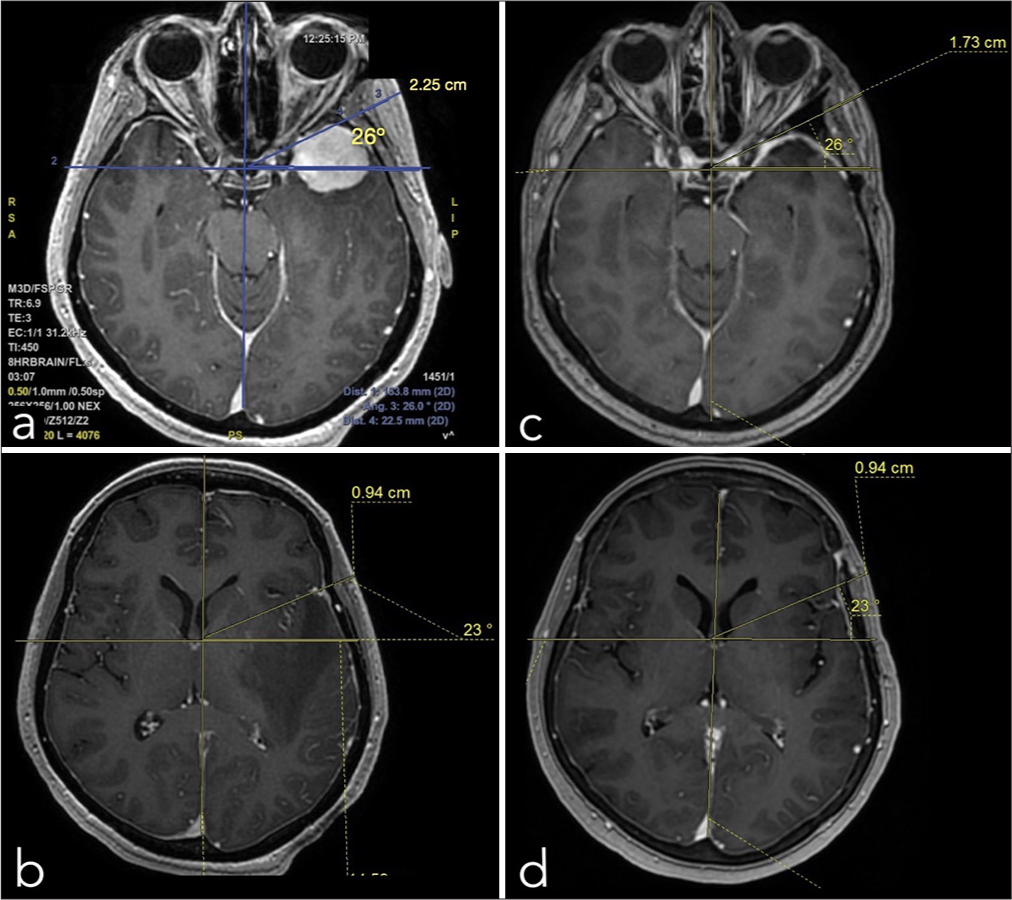Let’s talk about complications
Date of publication: 21-Mar-2025
Juha Hernesniemi: A message from overseas aspirants
Date of publication: 21-Mar-2025
BackgroundJuha Hernesniemi has played a pivotal role in advancing microneurosurgery, particularly in resource-limited settings where structured training opportunities are scarce. His philosophy of simplicity, efficiency, and anatomical preservation has influenced neurosurgeons worldwide, providing them with a framework to refine their skills despite technical and educational constraints.
Spinal subdural empyema: A two-dimensional illustrative operative video
Date of publication: 21-Mar-2025
BackgroundSpinal subdural empyema rarely involves the spinal cord and may result in devastating neurological deficits. These lesions typically require prompt diagnosis, surgical evacuation, and antibiotic therapy. Here, we present the clinical course, imaging, and narrated operative video of a thoracic spinal subdural empyema initially diagnosed as an intramedullary neoplasm.
Intradural extramedullary eosinophilic granuloma of the spine with emergency presentation: A case report
Date of publication: 21-Mar-2025
BackgroundIntradural extramedullary spinal eosinophilic granuloma is a very unusual manifestation of Langerhans Cell Histiocytosis (LCH) that is typically misdiagnosed due to its nonspecific clinical and radiological features.
Augmented reality for external ventricular drain placement: Model alignment and integration software
Date of publication: 21-Mar-2025
BackgroundExternal ventricular drainage (EVD) is a critical neurosurgical procedure for managing conditions. Despite its widespread use, EVD placement is associated with specific risks, as improper catheter positioning can lead to severe complications. Recent advancements in augmented reality (AR) technology present new opportunities to improve the precision and safety of surgical interventions.
In the right patient, likely fewer risks with posterior versus anterior cervical spine surgery: Perspective/short review
Date of publication: 21-Mar-2025
BackgroundCan we document that posterior cervical surgery (i.e., Laminoforaminotomy (LF) and Laminectomy (L) with Posterior Fusion (PF)) exposes patients to fewer adverse events (i.e., including negligence, multiple risks, negligence, errors, and mistakes) vs. anterior cervical surgery (i.e., Anterior Cervical Diskectomy/Fusion (ACDF) or Anterior Corpectomy/Fusion (ACF))?
Refining pineal gland tumor resection with bilateral occipital transtentorial approach: Technical insights
Date of publication: 14-Mar-2025
BackgroundPineal gland tumors are infrequent malignancies that predominantly manifest in children, comprising a mere 3–11% of all pediatric brain cancers and <1% of adult brain tumors. Pineal resection can be accessed through various approaches, most commonly the supracerebral infratentorial approach and the occipital transtentorial (OT) approach. Bilateral OT approach (BiOTA) on pineal gland complete resection allowed exposure and, therefore safer complete resection of the contralateral lesion, though the use is rarely reported before this case report.
The impact of sociodemographic factors and surgical modalities on deep brain stimulation for Parkinson’s disease
Date of publication: 14-Mar-2025
BackgroundThis study evaluated the impact of sociodemographic factors, surgical modalities, and commercially available options of electrodes on deep brain stimulation (DBS) outcomes in Parkinson’s disease.
Anterior rotation of the temporalis muscle for prevention of temporal hollowing in cranial surgeries: Esthetic and patient-reported outcomes
Date of publication: 14-Mar-2025
BackgroundTemporal hollowing is a common cosmetic complication following pterional craniotomies. To address this issue, we evaluated the efficacy of anterior rotation of the temporalis muscle at closure. Although this technique is not new and has been generally reported, no research studies have been conducted to evaluate its objective and patient-reported outcomes in the long term.
Treatment of tentorial dural arteriovenous fistula with preservation of the vein of Galen using a combination of transarterial and transvenous embolization
Date of publication: 14-Mar-2025
BackgroundDural arteriovenous fistulas (DAVFs) are abnormal connections between the dural arteries and dural venous sinuses or subarachnoid veins. A rare subtype of DAVF is tentorial DAVF (TDAVF), which is highly aggressive and often exhibits direct retrograde leptomeningeal drainage, increasing the risks of hemorrhage and venous ischemia. Transarterial embolization (TAE) using Onyx has become the preferred treatment method. In Onyx-based TAE, a long embolic material segment should be established within the draining vein past the shunt point. Here, we report a case of a patient with TDAVF who was successfully managed with preservation of the normal deep venous system through a combination of transarterial and transvenous embolization (TVE).













